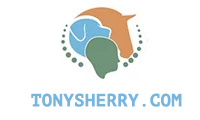Through over 35 years of experience in healthcare, I’ve observed a fascinating connection between mental health and physical discomfort. When people are no longer in pain, their mental health often improves significantly. Emotional issues, whether they stem from trauma, stress, or repetitive movements, can become trapped in our muscles. The body, always in survival mode, tries its best to compensate for these muscle malfunctions, but the burden of stored emotion can be immense.
The Hidden Toll of Emotional Storage in Muscles
Many underestimate how much emotion our muscles can store. It’s not just about physical aches and pains—our muscles hold onto the stress and trauma of our experiences. This emotional storage can lead to chronic discomfort and impede our ability to achieve mental and physical freedom. Releasing these emotions from our muscles is crucial for overall well-being.
A Noninvasive Approach to Healing
My approach to healthcare is noninvasive, often surprising those who experience it. Client’s frequently express amazement at the gentle techniques that result in significant changes in their bodies. It’s common for them to ask, “How did you do that?” or even jokingly call me a witch. At first, I found this a bit insulting, but I’ve come to see it as a compliment. After all, if healing someone’s body and mind seems like magic, then I’m happy to be seen as a modern-day witch. I often play along, saying with a smile, “My broomstick is parked outside.”
The Magic of Gentle Touch
The gentle touch I use in my practice may seem simple, but its effects can be profound. By carefully releasing the tension and emotions stored in muscles, I help my client’s achieve a state of comfort and relaxation. This process not only alleviates physical pain but also promotes emotional healing, leading to a more balanced and healthy life. It’s why some clients call me “magic fingers”.
Embracing Mind and Body Freedom
Understanding and addressing the connection between emotional and physical health is essential for true healing. By recognizing the role our muscles play in storing emotions, we can take steps toward releasing this burden and achieving a state of mind and body freedom. It’s a journey that requires patience and compassion, but the results are well worth the effort.
In conclusion, the path to better mental health often starts with addressing physical discomfort. Through noninvasive techniques and a gentle touch, we can release the emotions stored in our muscles and move towards a healthier, happier life. So, the next time you feel the weight of the world on your shoulders, remember that sometimes, a little “magic” is all it takes to set you free.

